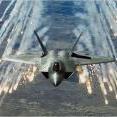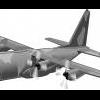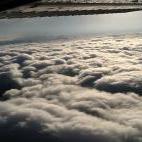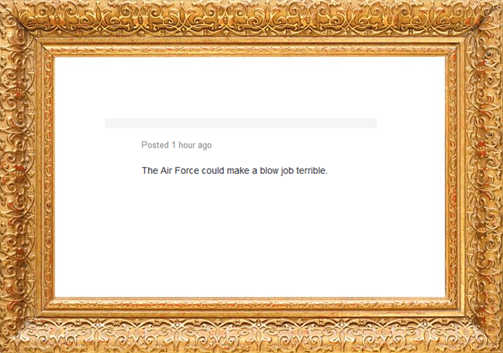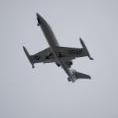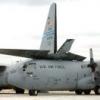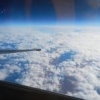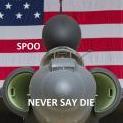Leaderboard
Popular Content
Showing content with the highest reputation on 02/09/2017 in all areas
-
8 points
-
I laugh quite a bit every time I hear AF "pilot shortage". There is no shortage of pilots wanting to fly planes in the AF. There's a shortage of the AF placing those pilots in jobs that allow them to be pilots, and to teach other pilots. There's plenty of bag wearers sitting at group level positions, in staff jobs, at IDE, etc staring at a computer screen. I've flown less than 200 hours a year the last 3 years as an experienced MWS instructor because the AF values keeping the self fellating bureaucratic process running more that it values flight experience. Senior Capts and junior majors are begging to be 'allowed' to get back to teaching the young pilots, only to be told that they're more valued behind a desk. No thanks, see ya, welcome aboard Delta 4962, non stop to Chicago.4 points
-
The 1500 hour rule does a ton of good things for pilots that Fingers is trying to undo. 1. Enhances flight safety. If you have doubts, go watch the Colgan crash video again. 2. It makes the regional airline model unsustainable. Most of the majors are already moving former regional routes back to mainline. Good for pilots to not work for regional slave wages, also means more majors hiring to fill expanding routes. This is driving a lot of the hiring. 3. It shifts the supply/demand for pilots. They aren't going to run out, they just can't be as choosy as they were for the last 15 years. They have 10K apps on file and the military putting out 1k+ a year. A lot of the apps are those they'd rather not hire for various reasons. To ensure they're getting quality candidates (mil pilots generally fall into this category) they are having to up pay and benefits to compete with other carriers. Look at pay rate rises over the past 18 months. It still never ceases to amaze me that the AF has made me count the days until I get out of a job that should be so awesome. I love flying fighters, but I hate being in the AF. The solution to keeping your people is not to try and reduce their prospects of future employment, or make that employment less desirable. I think that is a total shitbag move. If I ever had a doubt that I'm nothing but a number to the AF, it is completely erased with this line of effort.3 points
-
Like others above have said, you're a USAF officer regardless. No ifs/ands/buts--you're an officer. The Governor/President just determine whether you're on guard duty, or are "activated" as an active duty component of the USAF. But that is all separate from being an officer. Officer - who you are Pilot/job - what you do Active/Guard - who you work for3 points
-
Why TF would the FAA give two shits about this? FAA: Why should we do this? Goldfein: All of my people are leaving for a better QOL. FAA: Your concern is noted.3 points
-
You're reading too much into it. Active duty, AFRC and the Guard are all part of the Air Force. What it really comes down to is who's signing your paycheck at any given moment.2 points
-
2 points
-
Maybe "action" wasn't the right word. That's the first time I've seen a plane that big enter a dive like that and the camera panning back and forth between cockpit/spoilers/flaps at different stages of the approach was pretty cool. I can see how experienced mil pilots would think nothing of it though.2 points
-
Heard a great quote on a show I was watching recently. "I'm not talented enough to be unprepared." Sent from my iPhone using Baseops Network Forums2 points
-
2 points
-
2 points
-
Agree with snoopy. When I was competing for a pilot slot I thought there could be no more rewarding job in the world than being an Air Force pilot. I was not alone in this opinion. 12 years later I was exhausted, fed up, and burned out. If Big Blue can't figure out how to make this job rewarding enough to keep people around, I have little sympathy.2 points
-
Speaking of capsizing, here's one that never gets old... Sent from my iPhone using Baseops Network Forums2 points
-
“We are looking at all the possibilities, the ways we can increase the available pool [of pilots] that serves both the military and commercial industry, without going into direct competition,” he said. According to Everhart, a potential solution is bringing more predictability to Air Force Reserve commitments or adjusting the required flight hours needed to join a commercial airline. - Why would they want to avoid "direct competition?" Let me answer that for you. They will lose. It's easier to eliminate competition than win the competition. Everhart, Goldfein, and the airlines have a meeting in May. I'm guessing we'll know more at that point. https://www.ngaus.org/newsroom/news/air-force-airlines-talk-pilot-shortage#sthash.jQvtBkWK.dpuf1 point
-
Umm, since before the Air Force was an independent service. There's a whole lotta butthurtness on this forum over something they really need not to be butthurt over. There was no 1500 hr rule in the late 90s, yet folks had no problem getting hired then. If the airlines keep hiring at the levels they're projecting, you're worth your salt, you'll have no problem getting hired--even if they rescind the 1500 rule. For Goldfein, the issue is that the 1500 hr rule screwed over Air Force pilot retention even more. At least before, there was a marginally financially viable way for folks to build their hours through the civilian-only route. Folks would take the financial risk of paying for all the training and quals, and would suck up flying for peanuts in the regionals, since they had the hope of eventually reaching the big leagues, with their big league pay. The 1500 hr rule screwed that whole path up. Once the pool of maybe 3,000 (I get this number from a previous poster--can't vouch for its accuracy) well-qualified folks dries up, where are the major airlines, regionals, business aviation companies, etc., going to find their pilots, other than the military services--most notably Air Force, but also Navy, Marine Corps and Army? Rescinding the 1500 hr rule would at least offer a little bit of relief, and at this point, every little bit helps. Goldfein faces a further problem, in that a surprising amount of the military mission is executed by civilian contractors. The 1500 hr rule thus not only makes AF pilot retention harder, but it threatens the national aviation industry, by raising the barriers to entry too high for pilots. USTRANSCOM, for instance, contracts a helluva a lot of cargo movement; what happens when Atlas, Kalitta, DHL, etc., can't fly due to aircrew unavailability? It's not like they'll be able to task more C-17s to meet mission requirements, since--you guessed it--the AD and ARC C-17 units will have been gutted by airline hiring. In my mind, it would help if Goldfein approached the problem as a threat to the national aerospace system and industry, than "simply" a pilot retention problem. TT1 point
-
Is a solution that ignores the real problem(s) a viable solution? I'm not sure CSAF gets a pass when he acts like a high-turnover ghetto landlord that makes tenants sign a longer lease or burns down the neighboring complex, but doesn't fix the broken heater, dishwasher, and moldy carpet.1 point
-
I got lucky. But I work with people who are like "eh... I could see how people think fighter jets are cool... I just want a paycheck." It goes against every instinct I have to NOT apply knuckle to cranium.1 point
-
In fairness though it was nice to know you had your physical synced to your birth month as a lieutenant. It's a bit harder, sts, now that the date of expiration is 455 days after the last flight physical.1 point
-
I'm kinda looking forward to seeing video of Goldfein suggesting this to congress. They laughed at the requested bonus hike and told the AF to get its shit out of the street. Now he wants to change a rule born from the Colgan mishap in a sad attempt to make it harder for mil pilots to have options? Meet the new boss, same as the old boss.1 point
-
1 point
-
1 point
-
Good point. Why's it so hard to build modernized versions of stuff we figured out 30-50 years ago?1 point
-
"It's not T-38-y enough!" Why don't we just build some new T-38s and get it over with. Bigger wings, bigger tires, more efficient motors; whatever it takes to keep Stanley Student from killing himself. No datalinks or any of that bullshit. Then send the old ones to CAF/MAF bases for CPT programs since they're cheaper and harder to fly than every other Air Force jet. Fuel budget down, morale up, and NG gets thrown a bone.1 point
-
It's impressive how important physical controls are, and how even when presented with clear evidence of their necessity our gov't still won't do the right thing - https://www.emptywheel.net/2017/02/08/how-hal-martin-stole-75-of-nsas-hacking-tools-nsa-failed-to-implement-required-security-fixes-for-three-years-after-snowden/1 point
-
1 point
-
I'm just impressed the HARM sent you an email at all. I would have expected the first sign of a loss of flight pay to occur at the end of the month when you checked your LES.1 point
-
So true. Plus the gross mis-management of personnel. I doubt AFPC could find their own ass with both hands. Hell, I was offered the VSP to leave and the bonus to stay in within 8 months of each other.1 point
-
Reading the article, I got the sense that the CSAF wants to reduce my ability to find civilian airline employment.1 point
-
Dear President Trump, It's now been three weeks and one day since you took your Oath of Office. I don't mean to be unkind, but we all expected you to have solved everything, everywhere by now. I mean your predecessor had already issued his first executive order to close Gitmo and would soon abandon the agreed-upon at some risk to themselves missile defense systems in the Czech Republic and Poland at the behest of Russian demands. Speaking of dang foreigners, you replacing the bust of Winston Churchill in the Oval Office during your first week in direct contrast to the last guy who removed that thing in the same time frame absolutely merits the Speaker of the British Parliament not wanting you to speak there. I mean, really, recognizing in a very public way "the special relationship" in direct opposition to the way that relationship was immediately telegraphed in 2009 is the height of ill manners. Your, perhaps, negotiating ploy of not calling the Russian president a psychotic publically would seem weak sauce compared to being caught on open mic with his creature Medvedev and "having more room to maneuver" in order to appease Putin. I am truly surprised you haven't sent your Secretary of State over with the whited-out reset (translated incorrectly) button. The guy's been sworn in for nearly a week. Time's awastin' it would seem to most of us. Please don't even think of establishing any red lines anywhere either. And while your predecessor had already made his plans for the first of his 'round the world apology tours denigrating the idea of American Exceptionalism and been brushing up on his Nobel Peace Prize acceptance speech for not being GWB, you seem to be fixated on trying, however inartfully, to follow through on some of your campaign promises. And please don't even think of resurrecting that Monroe Doctrine also publicly repudiated. Everyone gets to interfere now, right? Except you and America. You and she should lie back and think of England... I mean really, is stopping the flow of unvetted refugees from failed nation-states that have a history of trying to kill 'Muricans really something you should be bothering with now especially since the last guy did the exact same thing and for a longer period of time? Lena Dunham and Madonna have called you out. I respectfully recommend you "Giddy-up" on burnishing your talk show appearances and not waste your time or my tax dollars on cheaper F-35s, defunding locales that refuse to follow federal law, or such nonsense. You might upset some folks and that's not acceptable.1 point
-
FIFY. If they think it's bad now, I'm sure they're really scared about what it will look like in a few years. In 2020 Delta starts retiring 500+/year, and doesn't drop below that number until after 2030. Five of those years are 700+. Thats 51% of the current seniority list in 10 years...not accounting for early outs. I'm sure UAL/AALs numbers will follow closely.1 point
-
on second thought, given Russian aggression in Korea we should probably start that war! Anymore troops on the peninsula and it might capsize......1 point
-
I have a few guesses. I don't know how much fucking studying it takes to just ask the guys in the field why they are bailing at the 4-6 year point.1 point
-
1 point
-
Imagine being the airfield manager at a small town Colorado airport when a 5 ft' something Chinese guy knocks on your door in a partial pressure suit in the middle of the night. IYAABYAS!1 point
-
A legend went west yesterday, Godspeed Mike. Hail Dragons. Article Link Dragon Lady Down Mike Hua’s airplane was leaving a silvery streak of vaporized jet fuel in its wake, as its tanks slowly drained through a fractured fuel line. The thin trail was barely visible in the starlight of a summer night; only a chase plane could have seen it. Hua had no idea his gas was bleeding away. But on August 3, 1959, the only chase plane in the world that could have paced him would have been another Lockheed U-2, since that’s what Hua was flying at 70,000 feet over Utah. Mike Hua was actually Major Hsichun Hua, an experienced F-86 Sabre pilot of the Republic of China Air Force, based on the island of Taiwan. He had been sent to Laughlin Air Force Base, in Texas, as one of a select group of Nationalist Chinese pilots appointed to train on the then super-secret spy plane so they could overfly mainland China. All of them had been arbitrarily given Western handles—Pete, Jack, Charlie, Sonny, Spike, Terry, Mickey, Mike—by their U.S. Air Force instructors. Hua, today a retired ROCAF general living in Maryland with an aeronautical engineering doctorate from Purdue, has retained Mike as part of his name ever since. That night in 1959, however, he was 34 years old and on just his seventh U-2 training flight. His assignment was to fly from Laughlin to overhead Big Spring, Texas; then northwest to his turnaround point at Ogden, Utah; southwest to Delta, Utah; and finally southeast for the long, lonely slog home. Hua wasn’t flying from VOR to VOR as any private pilot of the time could have done with his simple Narco VHF radio, and of course there was no such thing as GPS. He was navigating with the U-2A’s built-in sextant, taking star sights like a 19th-century mariner, albeit through a hooded cockpit scope. He was doing this while wearing a pressure suit and helmet, in a cockpit the size of a 1952 VW Bug driver’s seat, at night, in an airplane that required remarkably precise speed control. Five knots too fast meant Mach overspeed and possible failure of the fragile airframe, and 5 knots too slow meant a stall upset and equally destructive airframe failure. All of Hua’s U-2 flights had been solos, since no two-seaters existed as yet. To have survived this far was a sign of substantial Chinese aviation talent, for the “Dragon Lady” was the hardest-to-land airplane in the Air Force’s inventory, and perhaps the hardest-to-land aircraft in living memory. (Those who have piloted restored and replicated Gee Bee racers might disagree.) But Hua had landed solo six times, and his seventh U-2 touchdown was about to go down in aviation history. The spy planes were usually landed with the help of an experienced U-2 pilot stationed at the approach end of the runway, like an aircraft carrier’s LSO, to tell the pilot how many feet above the ground he was. Assuming the pilot had at least nailed the over-the-fence airspeed, every extra foot of altitude meant 1,000 more feet of runway would be needed. Eventually—and to this day—U-2s began to be landed with the help of “mobiles.” These are U-2 pilots driving muscle cars that can easily accelerate to 100 mph from a taxiway to catch up with a landing U-2 so the driver can call out precise altitudes, even in inches, to the pilot. Mike Hua had no mobile. In fact he didn’t have a friend in the world when his Pratt & Whitney J57 went silent 13 miles above Utah. U-2As had no fuel-quantity gauges—assumedly a weight-saving measure. A low-fuel warning light was supposed to come on when just 40 gallons remained, but Hua doesn’t remember seeing it. Since a glowing red instrument panel warning light would be impossible to ignore at night, apparently it had failed. It was 2258 local time when the big Pratt checked out and left Hua with nothing but the sound of the slipstream. Actually, Hua did have one friend: his long-winged Lockheed jet sailplane. From 70,000 feet, a U-2 could glide 250 nautical miles to sea level—make that 200 nm in Hua’s case, since he would ultimately land at 5,900 above sea level. For every 23 feet it traveled, an engine-out U-2 sank just one foot, a glide ratio identical to that of the ubiquitous Schweitzer 2-33 two-seat sailplane. Not far behind Hua was Hill Air Force Base, at Ogden. Crystal-clear hindsight 55 years later suggests that Hua could easily have turned around and glided to its 13,000-foot runway, where the U-2 would quickly be dragged into a hangar, its secrets intact. But below him was an unbroken undercast with tops at 40,000 feet, and Hua had watched the cloud buildup gradually obscure all ground lights during his leg from Texas to the Ogden turnaround point. Shooting an unfamiliar, dead-stick, single-pilot instrument approach into Hill would not have been fun. There was a better reason why Hua confidently held his southeast heading toward home. “We were told during ground school that the engine was not stable at high altitudes and would occasionally flame out,” he noted in a recent e-mail. “It could easily be relit below 35,000 feet, though. Before the first training flight, we were told to shut down the engine at altitude and to glide down to 35,000 feet to practice an air start, which we did. That night, I was frankly overconfident that the engine was having one of these ‘normal’ flameouts, so I maintained my course. When my air-start attempts failed, I was too low to reach any major field.” Below 35,000 feet, there was enough oxygen to support a relight, but Hua had no way of knowing his tanks were dry, and nothing in the world would restart his engine. As he entered the undercast, Hua called Hill AFB to try to get a steer away from the mountains that he knew were hidden below him. No answer. He transmitted a mayday on the guard frequency that was supposedly monitored by the military. Still no answer. Was there nobody flying late at night over Utah? Possible. Did nobody understand Hua’s Chinese-accented English? Maybe. Life was getting complicated. He’d lost the autopilot when the engine failed and the generator went offline, and a U-2A was a full-time job to fly manually at altitude. Hua’s pressure suit had also automatically inflated, which left him in solid clouds and turbulence trying to read a chart, working radios and hand-flying the airplane while blown up like the Michelin Man. The pilot’s classic mantra “aviate, navigate, communicate” may sound simple, but not when each step requires his full attention. Once Hua reached combustion-sustaining air at 35,000 feet, he tried three engine relights. He even got out the emergency procedures checklist to make sure he was doing it right, but of course he was trying to relight air, not jet fuel. Now he was down to 17,000 feet. His continued involuntary descent in the clouds must have seemed a butt-clenching eternity, but at 7,000 feet above sea level the U-2 broke into the clear and Hua could see how lucky he’d been. He was flying southeast in a dark valley, with mountains to each side, their tops still in the clouds. Hua was actually just 1,000 feet or so above the ground, perhaps less. At his 11 o’clock, he saw the lights of civilization, which turned out to be the small city of Cortez, Colo. And Cortez had a municipal airport. Luck continued to ride with Hua. He spotted the airport’s rotating beacon several miles southwest of town, and then the runway lights. The Cortez city council had recently decided that leaving the runway lights on at night was an unnecessary expense for a cash-strapped town. But as midnight neared, an inbound Frontier Airlines flight was running late. So on this night of all nights, the lights had been left on. Hua glided across Cortez Runway 21 from west to east, then made a broad 270-degree turn to the left and gently rolled out on a long final to the 7,200-foot runway. (Don’t be fooled by that seemingly ample length. Cortez Municipal is at 5,900 feet above sea level, and at that density altitude on a warm August night, the runway was probably equivalent to a sea-level strip roughly half that length. It was also only 10 feet wider on each side than the U-2A’s 80-foot wingspan.) In a remarkable demonstration of precision approach-speed control under extreme pressure, Hua put his big U-2A down, if not on the numbers, certainly close enough for government work, as the classic and appropriate expression has it. The extreme challenge in landing an early U-2 was created by a combination of high-aspect-ratio wings fat with low-speed lift, particularly in ground effect, and a lack of effective lift-dumping devices. Sailplanes with U-2-like wings have powerful spoilers that are as effective as a throttle: Pop the spoilers and the glider decelerates like a Cessna with its throttle pulled to idle. Retract the spoilers and the glider reacts as though you had added power. The only way to bring a U-2 to earth, however, was to bleed away every ounce of lift short of a stall while at the same time avoiding a stall, since dropping a U-2 onto a runway from 2 or 3 feet could terminally damage its fragile airframe. Try to land a U-2 in a level attitude on the main gear—to “wheel it on” with its wings still anxious to fly—and the spy plane would bounce back into the air and float the length of the longest runway the Air Force owned. Touch tailwheel first just as the airplane loosed its grasp on the air and a U-2 would call it a day. Major Hua got it exactly right that night. To his surprise, the U-2’s landing gear collapsed during rollout because the airplane had lost its hydraulic pump after the engine failure, so the gear extended but lacked the hydraulic pressure to engage the downlocks. “I felt like I had made a nice landing, but then the belly scratched the runway,” Hua wrote. This put the wingtips close enough to the runway that a ground loop was inevitable. The left wing touched, and the big Lockheed spun out like an old Porsche 911, ending up facing backward in the sagebrush alongside the runway. “I so lucky. I so lucky,” a bystander recalls Hua muttering after the landing. But luck be damned, the Cortez incident was a textbook example of how to handle a nighttime, IFR, single-engine, in-flight engine failure calmly and skillfully. Give that man a medal, the Air Force said, and awarded Hua the Distinguished Flying Cross. From the Denver Post: After receiving a Distinguished Flying Cross from the U.S. Air Force for his feat, Hua went on to become a four-star general in the Republic of China Air Force. He earned a master’s degree and doctorate in aeronautical engineering at Purdue University and was in charge of Taiwan’s aerospace program. Now living in Maryland, he has written or been a source for several articles about the landing. Hua also wrote a book, “Lost Black Cats: The Story of Two Captured U-2 Pilots”, about two of his comrades who were captured in mainland China after their spy planes went down.1 point
-
As you alluded in your post, there are lots of options out there to be a UPT spouse and member of the ARC. We'll need some pics of your fiancé to help you narrow it down some more.1 point
-
1 point
-
Hey everyone. Just wanted to spread some information about the fact that you need to know the regs yourself because lodging people don't know their own regs. I was TDY for 16 weeks and when I checked into lodging they did not have availability. They told me I could NOT have a non A letter and would have to stay in their contract quarters (Holiday Inn). I told them they were wrong, and they essentially laughed in my face. So I said I'd like to speak with their manager. Long story short, 3 supervisors and 3 days later, I went all the way to the GM of lodging with a copy of their own reg that stated when there isn't availability, member is given the option to have a non A letter or REQUEST contract quarters. A stumped GM gave me the non A letter. Instead of staying in the Holiday Inn for 4 months which by the way cost the full lodging per diem, for the exact same rate, I rented an ocean (Gulf) front condo (2bdrm, 2 bath). SAME COST TO GOVERNMENT! When I told lodging they were getting ripped off by the Holiday Inn, they told me, and I quote "we're not in the business of saving money." That's our tax dollars at work.1 point
-
I'm a little late to the fight here but dude, your engrish is f'ing terrible. Seriously guys?-1 points
-
I'm not sure what "valuable information" you're referring to. You should reread his comment history. Seriously.-1 points
-
I wonder which three air frames would come up... Must just be a crazy theory.-1 points


